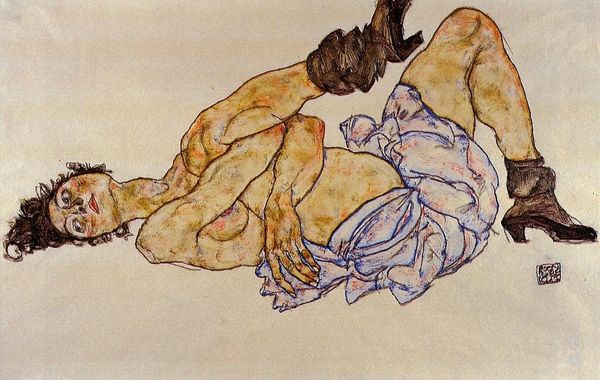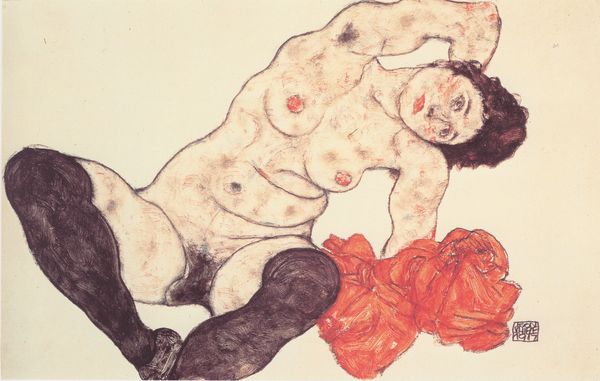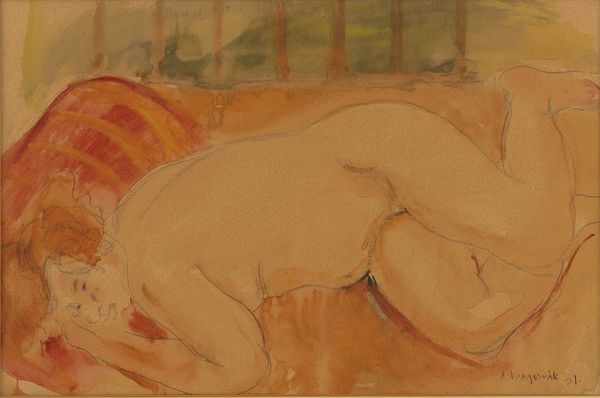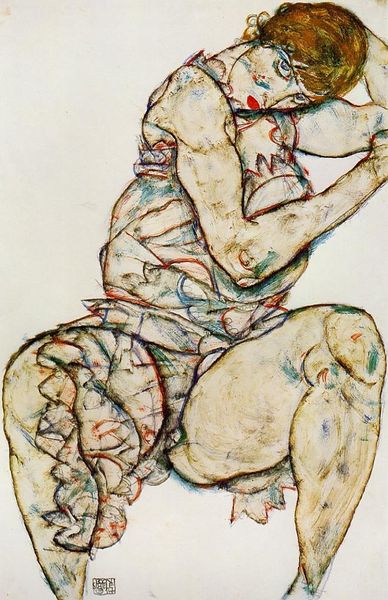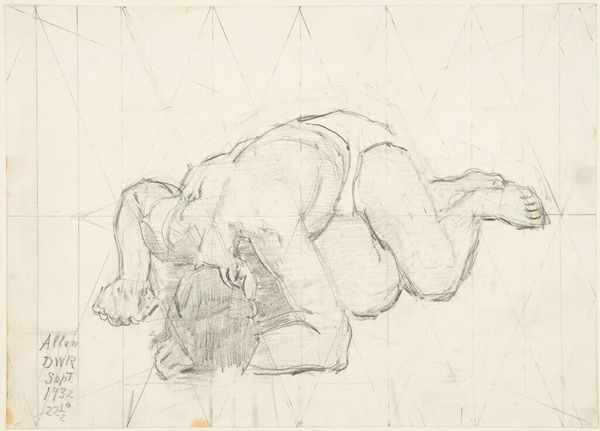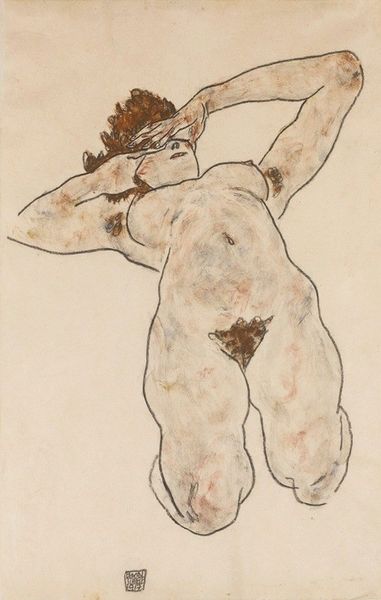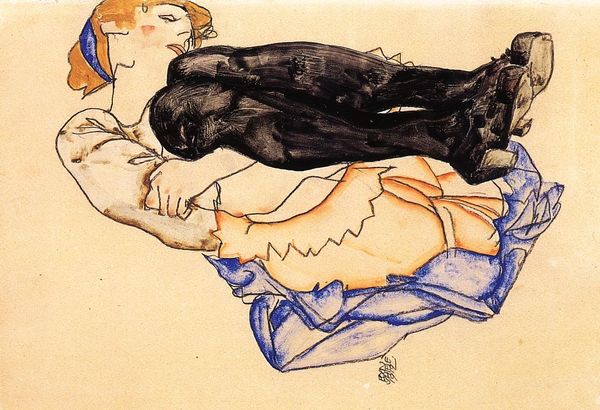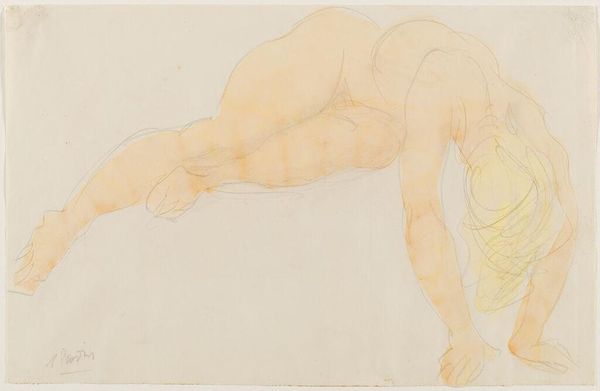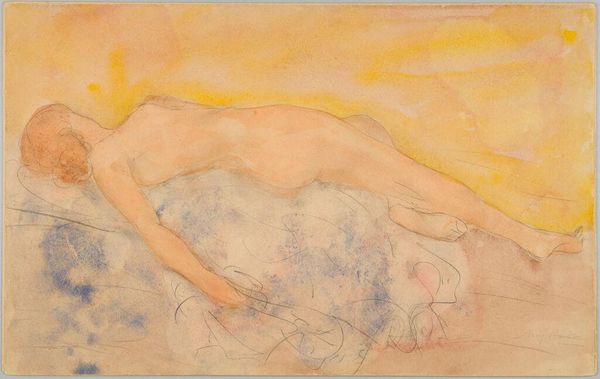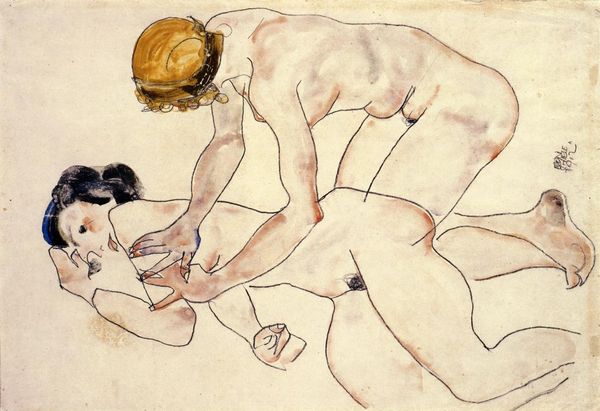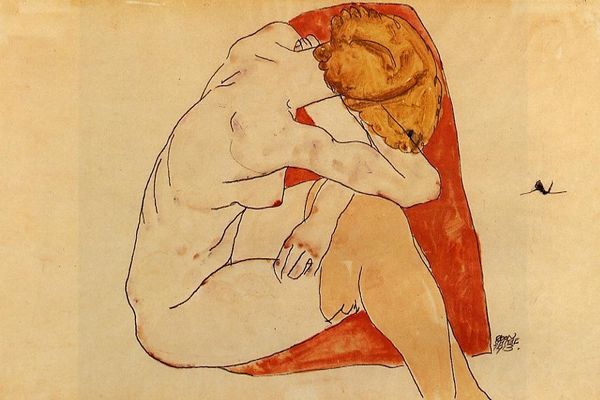
drawing, coloured-pencil, pencil
#
portrait
#
drawing
#
figurative
#
coloured-pencil
#
pencil sketch
#
figuration
#
pencil drawing
#
coloured pencil
#
pencil
#
expressionism
#
portrait drawing
#
nude
Copyright: Public Domain: Artvee
Curator: Egon Schiele's 1917 work, "Kneeling Girl, Resting on Both Elbows," executed with pencil and coloured pencil, presents a figure in a rather unique posture. What are your first thoughts looking at the piece? Editor: It's incredibly striking. The contorted pose, the fragility conveyed through the medium... it all adds up to a feeling of intense vulnerability. The drawing itself feels exposed, almost unfinished, and that contributes to the emotional weight. Curator: Absolutely. Schiele often uses the human body to convey emotional and psychological states, reflecting societal anxieties around identity and sexuality. The kneeling posture, historically tied to prayer or supplication, takes on a different connotation here. Does it read as submissive to you? Editor: It's complex. The angle of her face, pressed against her hands, suggests both protection and perhaps shame. However, her exposed body and intense gaze push back against pure submission. The line work also contributes; the way Schiele renders the cloth almost blends into her skin, blurring the lines between concealment and exposure. It disrupts any clear message of subservience. Curator: Schiele was part of the Expressionist movement, known for distorting form to communicate inner turmoil and heightened emotions. Note the economy of line – he's suggesting form, rather than explicitly defining it. It seems to resonate across different media. Do you think he consciously uses certain poses as psychological keys? Editor: Undeniably. The exaggerated, almost awkward angles of the limbs aren't simply anatomical imperfections; they heighten the sense of unease. Consider how her body is truncated and tightly constrained within the composition’s frame—she becomes subject and object, trapped in the picture. Curator: Schiele died tragically young, at only 28, the same year as this artwork, and just as the First World War was ending. His work offers a glimpse into the seismic shifts that occurred as society entered into a brave new, broken world. I am now interested in other artwork he might have produced around this time. Editor: Indeed, Schiele leaves us with an intense and intimate meditation on the human condition, one expressed through form and imbued with potent psychological depth. It's a raw and unflinching piece.
Comments
No comments
Be the first to comment and join the conversation on the ultimate creative platform.
